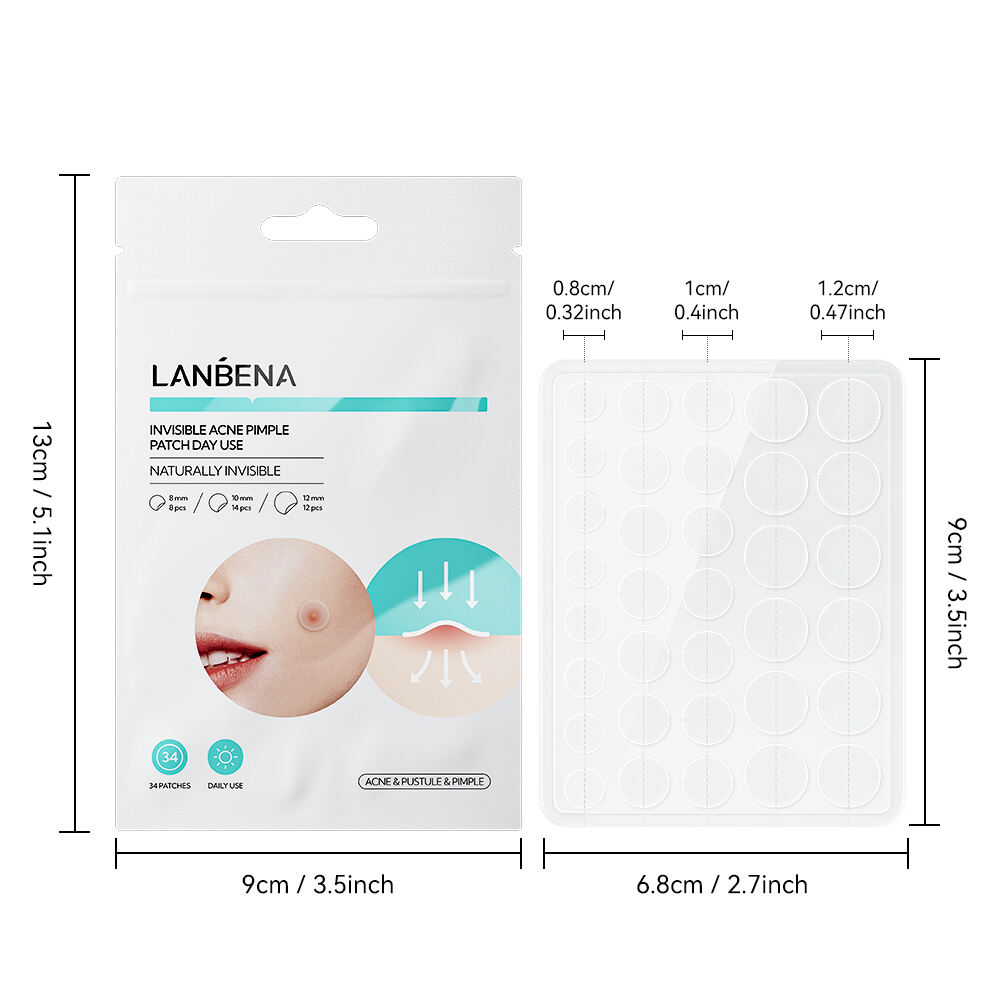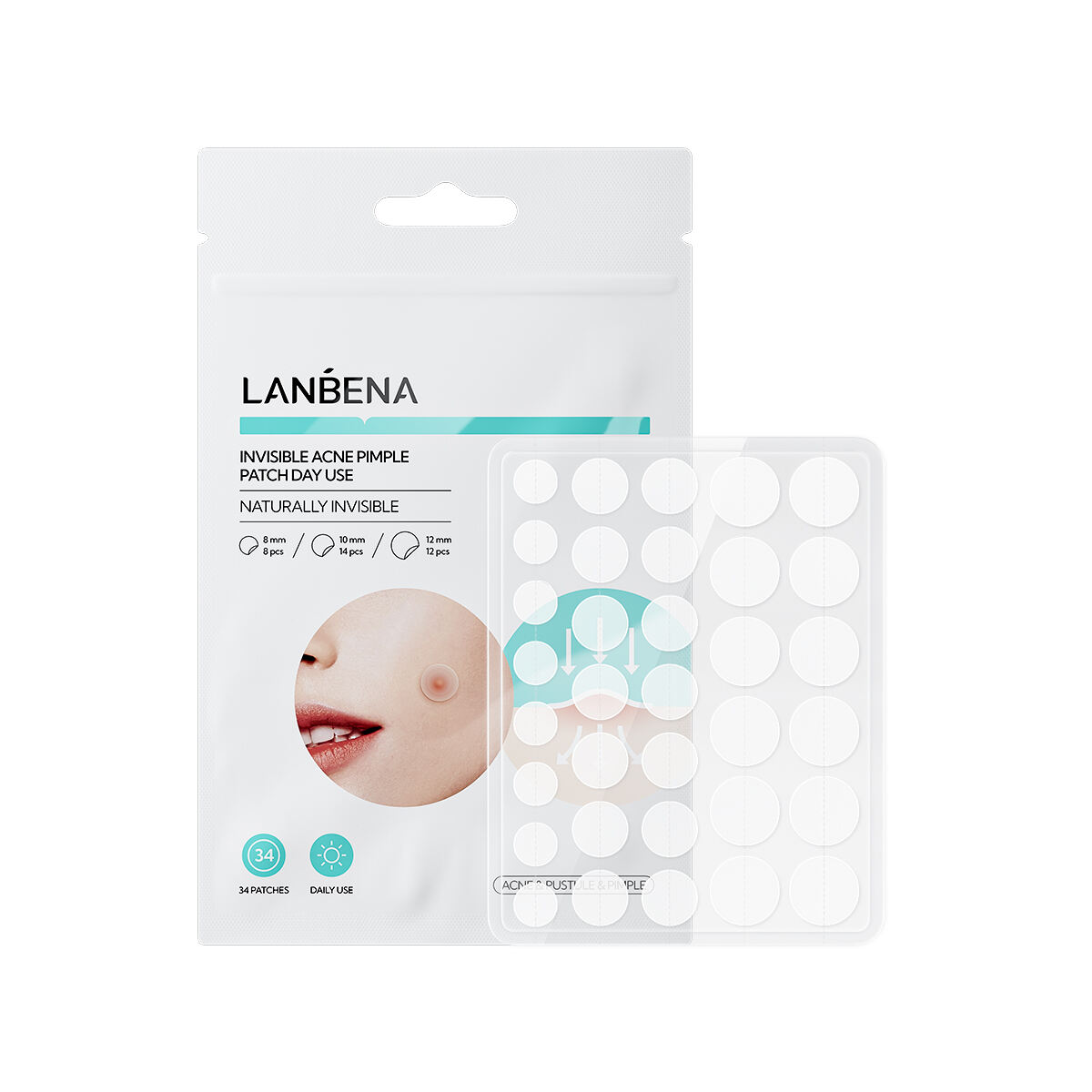Sensitive skin requires extra care and attention when selecting skincare products, especially those designed to treat acne and blemishes. Pimple patches have gained tremendous popularity in recent years as an effective spot treatment for breakouts, but many people with sensitive skin wonder whether these hydrocolloid patches are suitable for their delicate complexion. Understanding the composition, benefits, and potential risks of pimple patches can help individuals with sensitive skin make informed decisions about incorporating these products into their skincare routine.
Understanding Hydrocolloid Technology
What Are Hydrocolloid Materials
Hydrocolloid materials form the foundation of most modern pimple patches, creating a moist healing environment that promotes faster wound recovery. These materials consist of gel-forming polymers that absorb excess fluid from wounds while maintaining optimal moisture levels for healing. Originally developed for medical wound care applications, hydrocolloid technology has been adapted for cosmetic use in acne treatment products. The biocompatible nature of hydrocolloid materials makes them generally well-tolerated by various skin types, including those with sensitivity concerns.
The molecular structure of hydrocolloid creates a protective barrier that shields the affected area from external contaminants while allowing the skin to breathe naturally. This unique property helps prevent secondary infections that can occur when acne lesions are exposed to bacteria and environmental pollutants. For sensitive skin, this protective aspect is particularly beneficial as it reduces the risk of irritation from external factors that might otherwise aggravate existing inflammation.
How Hydrocolloid Patches Work
When applied to an active breakout, hydrocolloid patches create an occlusive environment that draws out pus and excess sebum from the pimple through osmotic action. This process helps flatten the blemish more quickly than traditional drying treatments, which can be harsh on sensitive skin. The patch maintains consistent moisture levels around the affected area, promoting cellular regeneration and reducing the likelihood of scarring or hyperpigmentation that often concerns individuals with sensitive complexions.
The gentle extraction mechanism of hydrocolloid patches eliminates the need for manual picking or squeezing, behaviors that can cause additional trauma to sensitive skin. By providing a controlled environment for the natural healing process, these patches support the skin's inherent repair mechanisms without introducing harsh chemicals or aggressive ingredients that might trigger sensitivity reactions.
Benefits for Sensitive Skin Types
Gentle Treatment Approach
Unlike traditional acne treatments that rely on strong active ingredients like salicylic acid or benzoyl peroxide, pimple patches offer a non-chemical approach to blemish treatment. This characteristic makes them particularly appealing for individuals with sensitive skin who may experience redness, burning, or peeling when using conventional topical treatments. The physical action of hydrocolloid absorption provides effective results without the potential for chemical irritation or disruption of the skin's natural pH balance.
The passive nature of patch treatment allows sensitive skin to maintain its protective barrier while still receiving targeted care for individual blemishes. This approach respects the delicate balance of sensitive skin while delivering focused treatment exactly where needed, minimizing exposure to potentially irritating substances across larger areas of the face.
Protection and Prevention Benefits
Beyond their treatment capabilities, pimple patches serve as physical barriers that protect healing blemishes from environmental irritants and accidental touching. For sensitive skin types, this protective function is invaluable as it prevents additional inflammation that might result from exposure to pollution, makeup, or unconscious face-touching habits. The patch creates a sterile microenvironment that supports optimal healing conditions while shielding the area from potential aggressors.
The prevention of post-inflammatory hyperpigmentation represents another significant benefit for sensitive skin users. By maintaining proper moisture levels and protecting the healing tissue from UV exposure and mechanical trauma, pimple patches help ensure that blemishes heal cleanly without leaving behind dark spots or textural changes that can plague sensitive skin types for months after the initial breakout has resolved.

Potential Considerations and Precautions
Adhesive Sensitivity Issues
While the hydrocolloid material itself is generally well-tolerated, some individuals with extremely sensitive skin may experience reactions to the adhesive components used to secure the patch to the skin. These reactions typically manifest as mild redness or irritation around the patch perimeter and usually resolve quickly after removal. Testing the patch on a small, inconspicuous area before applying it to facial blemishes can help identify potential adhesive sensitivities before widespread use.
The quality and composition of adhesives vary between manufacturers, with some brands specifically formulating their patches with hypoallergenic adhesives designed for sensitive skin applications. Reading product labels and choosing patches from reputable manufacturers who prioritize skin compatibility can help minimize the risk of adhesive-related reactions in sensitive individuals.
Proper Application Techniques
Correct application and removal techniques are crucial for preventing irritation in sensitive skin users. The patch should be applied to clean, dry skin and pressed gently to ensure proper adhesion without excessive manipulation of the surrounding tissue. When removing the patch, it should be peeled off slowly and carefully, preferably after warming the adhesive slightly with a warm, damp cloth to reduce the force required for removal.
Timing considerations also play a role in successful patch use for sensitive skin. Leaving patches in place for the recommended duration without extending wear time helps prevent potential irritation from prolonged adhesive contact. Most patches are designed for 6-8 hours of wear, providing sufficient time for effective treatment while minimizing the risk of adverse reactions in sensitive individuals.
Choosing the Right Patches
Quality Indicators and Certifications
When selecting pimple patches for sensitive skin, certain quality indicators can help ensure product safety and effectiveness. Look for patches that have undergone dermatological testing and carry certifications from recognized testing organizations. Products labeled as hypoallergenic or specifically formulated for sensitive skin have typically undergone additional testing to verify their gentleness and compatibility with reactive skin types.
The thickness and breathability of the patch material also influence comfort and tolerability for sensitive skin users. Thinner, more breathable patches tend to be less noticeable during wear and may cause less mechanical irritation than thicker alternatives. Premium patches often feature advanced hydrocolloid formulations that provide effective treatment while maintaining flexibility and comfort throughout the wear period.
Ingredient Transparency and Safety
Reputable manufacturers provide complete ingredient lists for their pimple patches, allowing consumers with known sensitivities to make informed choices. Avoid patches that contain fragrances, dyes, or additional active ingredients that might increase the risk of reactions in sensitive skin. Simple formulations focusing on pure hydrocolloid technology typically offer the best safety profile for individuals with reactive skin conditions.
Third-party testing and quality assurance measures provide additional confidence in product safety for sensitive skin applications. Patches manufactured in facilities that follow strict quality control protocols and undergo regular safety audits are more likely to maintain consistent performance and minimize contamination risks that could trigger sensitivity reactions.
Integration with Sensitive Skin Routines
Complementary Product Considerations
Incorporating pimple patches into existing sensitive skin routines requires careful consideration of product interactions and timing. The patches work best when applied to clean skin free of other topical treatments, so planning their use around your regular skincare schedule is important. Gentle cleansing before application ensures optimal patch adhesion while removing potential irritants that might become trapped under the patch.
After patch removal, sensitive skin may benefit from the application of a gentle, fragrance-free moisturizer to restore hydration and comfort to the treated area. Avoiding harsh toners, exfoliants, or active ingredients immediately after patch use helps prevent potential irritation during the skin's recovery period.
Long-term Usage Strategies
For individuals with sensitive skin who experience frequent breakouts, developing a sustainable approach to patch usage helps maximize benefits while minimizing cumulative irritation risks. Rotating patch application sites and allowing recovery time between treatments can prevent adhesive-related sensitization that might develop with continuous use in the same areas.
Monitoring skin response over time helps identify any changes in tolerance or effectiveness that might require adjustments to usage patterns. Some sensitive skin types may find that their tolerance for patches improves with regular use as the skin adapts, while others may need to limit usage frequency to maintain optimal comfort and results.
FAQ
Can people with extremely sensitive skin safely use pimple patches
Most people with extremely sensitive skin can safely use pimple patches, but it's recommended to perform a patch test first on a small area of skin. Start with shorter wear times and gradually increase if no irritation occurs. Choose patches specifically labeled for sensitive skin and avoid those with additional fragrances or active ingredients beyond hydrocolloid.
How long should sensitive skin users leave pimple patches on
Sensitive skin users should typically wear pimple patches for 6-8 hours, which is sufficient for effective treatment while minimizing irritation risk. Overnight application is often ideal as it provides uninterrupted treatment time. Remove patches immediately if any burning, excessive redness, or discomfort develops during wear.
What should you do if irritation occurs after using pimple patches
If irritation occurs, remove the patch immediately and cleanse the area gently with lukewarm water. Apply a cool compress if needed and use a gentle, fragrance-free moisturizer to soothe the skin. Avoid using patches in the same area for several days and consider switching to a different brand formulated specifically for sensitive skin.
Are there specific ingredients sensitive skin users should avoid in pimple patches
Sensitive skin users should avoid pimple patches containing fragrances, artificial dyes, salicylic acid, tea tree oil, or other active ingredients beyond basic hydrocolloid. These additives can increase irritation risk in reactive skin types. Look for patches with minimal, transparent ingredient lists focusing on pure hydrocolloid technology for the safest option.

